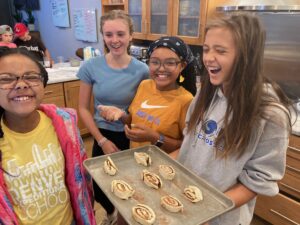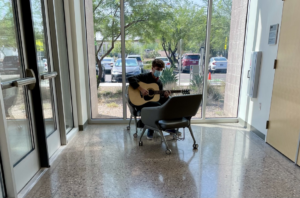10 Elements of Next-Gen Learner Experience (LX)

“User experience (UX) involves a person’s behaviors, attitudes, and emotions about using a particular product, system or service,” according to Wikipedia. User experience UX is more than a user interface (UI), it “includes the practical, experiential, affective, meaningful and valuable aspects” of the interaction as well as “a person’s perceptions of system aspects such as utility, ease of use and efficiency.”
With growing access to online learning and the adoption of school models that blend the best of online and face-to-face learning, there is growing attention to what could be called the learner experience (LX)—how students interact with the new blended instantiation of school.
Christensen Institute defines blended learning as a formal education program in which a student learns:
- at least in part through online learning, with some element of student control over time, place, path, and/or pace;
- at least in part in a supervised brick-and-mortar location away from home;
- and the modalities along each student’s learning path within a course or subject are connected to provide an integrated learning experience.
This definition outlines a personalized high-agency experience. More broadly, a quality learner experience would include at least these 10 characteristics:
- Daily engagement in powerful learning experiences;
- Culture, policy and tools that support quality work products;
- 24/7 access to an Internet connected device (or devices);
- Modern customizable user interface with seamless movement between applications;
- Achievement recognition and data visualization tools that guide/motivate progress;
- Flexibility in learning path and pace;
- Effective academic support systems;
- Sustained advisory relationship including college/career awareness and guidance:
- Positive physical environment that supports learning experiences; and
- Meaningful and healthy extracurricular activities
What would you add/modify for a positive learner experience?







Kenneth Tilton
The only problem I see with that otherwise excellent list is the circular definition of "quality learning experience" as involving "powerful learning experiences", which is left undefined. Achieving same is all we need -- the rest will fall into line. The good news is how many people are working on that. I just hope the thousand experiments we need are not suffocated by Common Core. But I digress. :)
Replies
Tom Vander Ark
We spent the summer studying 20 schools that promote Deeper Learning around the Common Core--school doesn't need to suck but it does take leadership to avoid brain dead test prep. Here's the paper we wrote:
http://cdno.gettingsmart.com/wp-content/uploads/2013/12/DLForEveryStudent_FINAL.pdf
Margaret Weigel
Hi. This is a lovely list, although it should be noted that not all of these are all specifically digital affordances, but attributes of good teaching in general.
Attributes I would add to my ideal digital learning experience would include partnering with remote peers from different cultures and backgrounds; the ability to create and produce using these tools; integration of digital tools and 'meatspace' explorations. I could go on, but I'm at work. :)
Replies
Tom Vander Ark
This list is NOT limited to digital experience--the whole point of the post is to reconsider the entire learning process from the student's perspective. That's why I like Danville Schools focus on 'powerful learning experiences' for students. Courses, master schedules, tests (etc) are artifacts of adult-centered design; my point is that new tools create the opportunity for powerful learning environments and individual learning progressions.